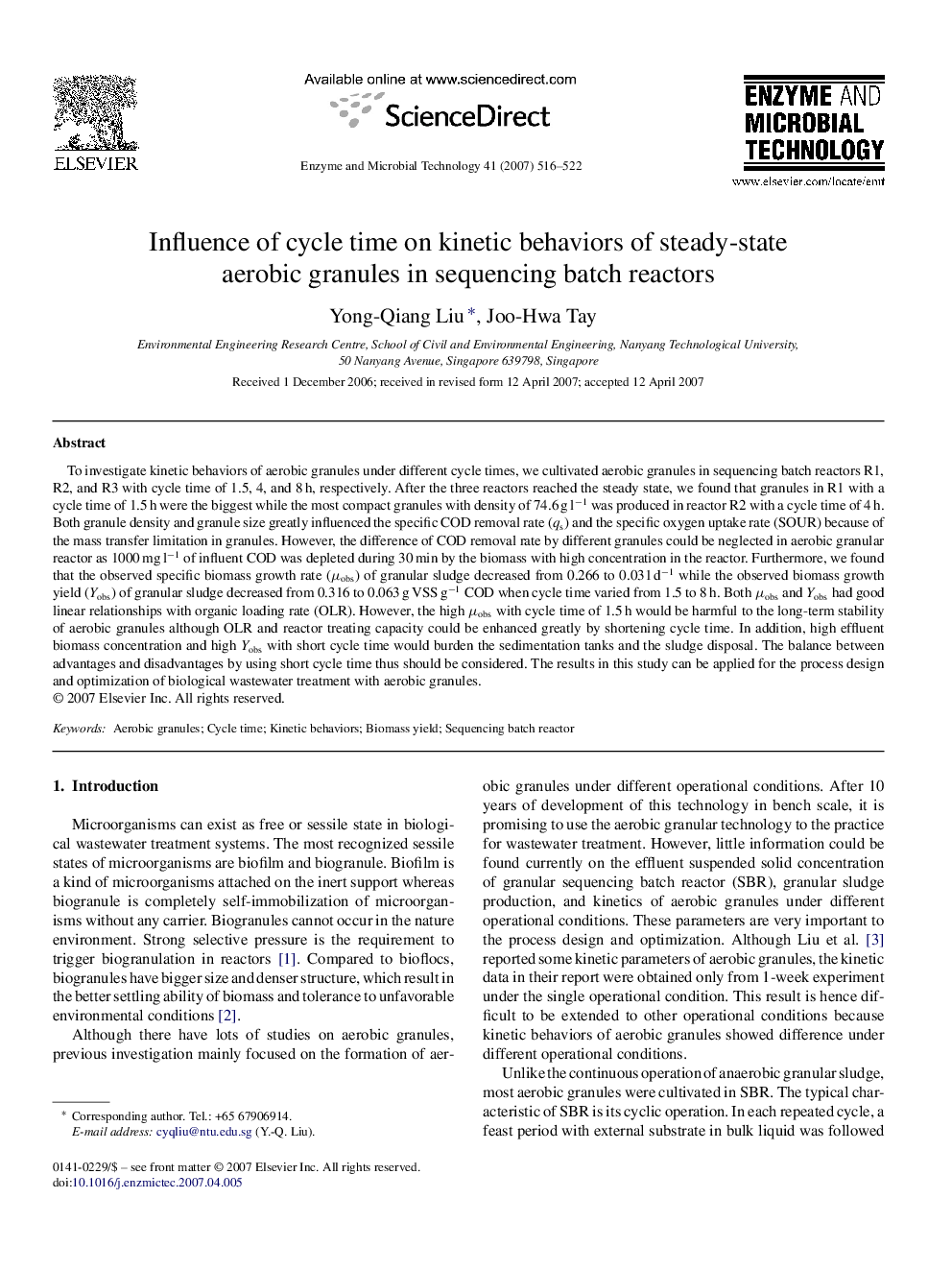| Article ID | Journal | Published Year | Pages | File Type |
|---|---|---|---|---|
| 17903 | Enzyme and Microbial Technology | 2007 | 7 Pages |
To investigate kinetic behaviors of aerobic granules under different cycle times, we cultivated aerobic granules in sequencing batch reactors R1, R2, and R3 with cycle time of 1.5, 4, and 8 h, respectively. After the three reactors reached the steady state, we found that granules in R1 with a cycle time of 1.5 h were the biggest while the most compact granules with density of 74.6 g l−1 was produced in reactor R2 with a cycle time of 4 h. Both granule density and granule size greatly influenced the specific COD removal rate (qs) and the specific oxygen uptake rate (SOUR) because of the mass transfer limitation in granules. However, the difference of COD removal rate by different granules could be neglected in aerobic granular reactor as 1000 mg l−1 of influent COD was depleted during 30 min by the biomass with high concentration in the reactor. Furthermore, we found that the observed specific biomass growth rate (μobs) of granular sludge decreased from 0.266 to 0.031 d−1 while the observed biomass growth yield (Yobs) of granular sludge decreased from 0.316 to 0.063 g VSS g−1 COD when cycle time varied from 1.5 to 8 h. Both μobs and Yobs had good linear relationships with organic loading rate (OLR). However, the high μobs with cycle time of 1.5 h would be harmful to the long-term stability of aerobic granules although OLR and reactor treating capacity could be enhanced greatly by shortening cycle time. In addition, high effluent biomass concentration and high Yobs with short cycle time would burden the sedimentation tanks and the sludge disposal. The balance between advantages and disadvantages by using short cycle time thus should be considered. The results in this study can be applied for the process design and optimization of biological wastewater treatment with aerobic granules.
